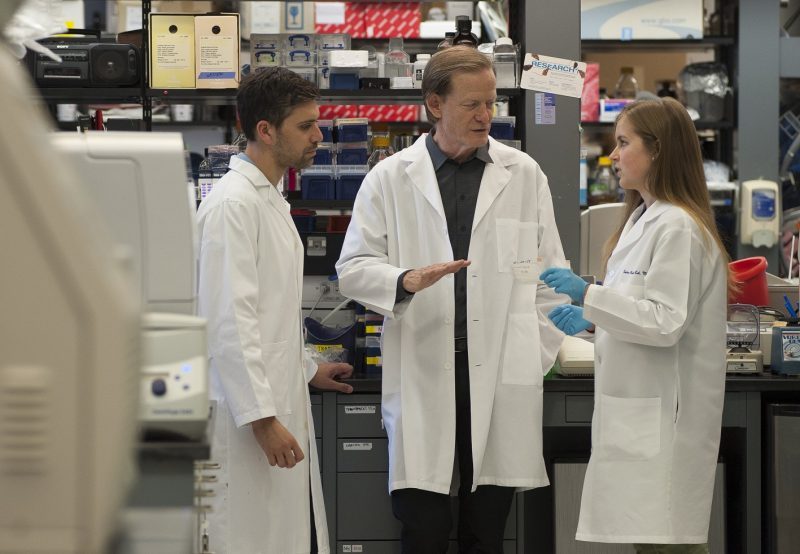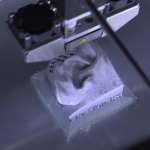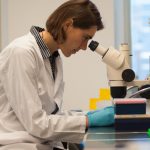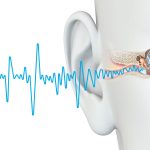A report published in JAMA Otolaryngology‑Head and Neck Surgery just last week suggests that the number of people in the U.S. with hearing loss is expected to double by the year 2060.
Hearing loss comes in a few forms, but it is commonly acquired from excessive noise exposure, which can destroy the tiny, sound-sensing cells of the inner ear, known as “hair cells.” We are born with about 15,000 of these cells, and once we lose them (from noise, or perhaps from other factors such as certain medications, infection and as part of the natural aging process), we can’t get them back.

Regenerating sound-sensing cells in the ear
Researchers around the world are working to find a solution (beyond hearing aids and cochlear implants) to overcome this debilitating condition. In 2013, a lab at Mass. Eye and Ear led by Albert Edge, Ph.D., successfully regenerated these tiny cells using stem cells (cells that divide and multiply) they had found in the inner ear. They found that they could convert the stem cells into hair cells using a combination of drugs and growth factors. They tested their method in a mouse model of acquired deafness, and restored partial hearing. However, the success of restoring hearing through this approach was limited by the small number of those stem cells found in the ear that could be turned into hair cells.
In a new research study published in Cell Reports, the lab collaborated with researchers at Brigham and Women’s Hospital and MIT to devise a 2-step plan for regenerating a large population of hair cells in the ear. The team has shown that they can first augment the number of stem cells, and then convert that large population into hair cells, lending hope that full hearing can be restored to those with hearing loss due to damaged hair cells.
The stem cells used to create hair cells, known as Lgr5+ cells, are also found in the lining of the intestine. In that environment, they contribute to the process of actively replacing the intestinal lining every eight days. The regenerative nature of these cells motivated the researchers to use investigate if they could be used to regenerate hair cells in the ear.
From cells extracted from a single ear, the team regenerated more than 11,500 cells in a dish (compared to 200 hair cells regenerated without efforts to augment).
When we discussed the advance with Dr. Edge, he said:
“This is an important step in our research that will hopefully bring treatments closer. We were excited to find Lgr5+ cells in the ear, because, in the intestine, these cells are very actively replacing the intestinal epithelium. Every eight days, we completely replace the entire lining of our intestine, making millions of new cells every day…Now, these cells appear very capable of making new hair cells in the ear. What we have done now in this work is to use a combination of drugs and growth factors to make these cells multiply. So, we can expand them to make thousands of cells, and then we can turn them into hair cells to be used for hearing.”
Though we still have a few more steps to take before we can design clinical trials (for humans) using this approach, the study certainly brings us closer to the goal of developing drug therapies for hearing loss.




A question. Is it possible to suddenly experience tinnitus and hearing loss immediately having a deployed air bag hit a person squarely in the face?
Thanks so much for reading, Charlotte. Unfortunately, we can’t address individual medical questions like this without seeing you for an exam. If you’d like to make an appointment with a Mass. Eye and Ear specialist, you can call 617-573-3954 or submit a form at this link.
This research is going to change the deaf community with remarkable results. I am looking forward to the bext step in clinical research on Lrg5.
Any studies or progress to help patients with severe tinnitus?
Hi Judith,
Thanks for reading! We’re making progress and will certainly keep you posted. This link may be helpful.
Best,
Suzanne
I have acoustic Neuroma left ear. I am currently on observation with yearly MRI. How is the research progressing on this disease? The surgery to get rid of it sounds awful.
Hi Mo, please follow up with your doctor about this. Thanks for reading.
Just wondering if you any closer to a clinical trial -this research sounds so promising!
Hi, im writing with the intention of knowing initiatives, research or advances that are being carried out in your organization (eaton peabody labs) regarding cellular regeneration in the inner ear or similar.
I am 28 years old, I have been profoundly deaf for almost 2 years and I am trying to fill myself with medical and scientific information to be able to analyze the alternatives as possible as possible, taking into account current events and future expectations in this field. Today the most advanced solution is the cochlear implant, it is in my opinion without a doubt a great contribution for a certain type of patient with severe hypocause. However, he is not able to convince me definitively for different reasons.
On the other hand, I learned some time ago about research with positive effects that have been carried out using stem cells, others with treatments with genetic rehabilitation, but I have not been able to collect a specific file on them.
Thank you very much in advance and I look forward to any positive response.
Hello Erick, thanks so much for your interest and comment. Our team recommends checking out the Spring 2019 issue of Harvard Otolaryngology magazine for the latest information on this work. More information about the lab can also be found here.
Hello,are there any clinical trials with stem cell therapy for hearing loss.ie increasing the cilia?Are you clise to real treatment for this?